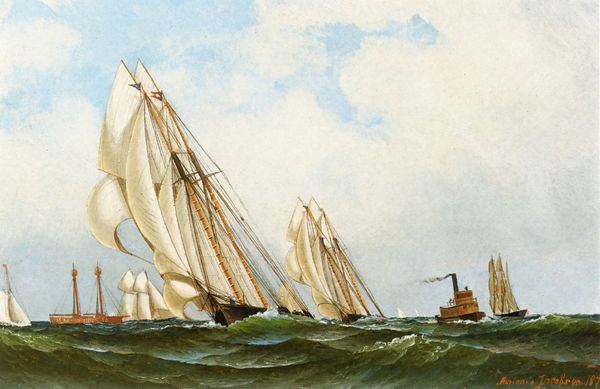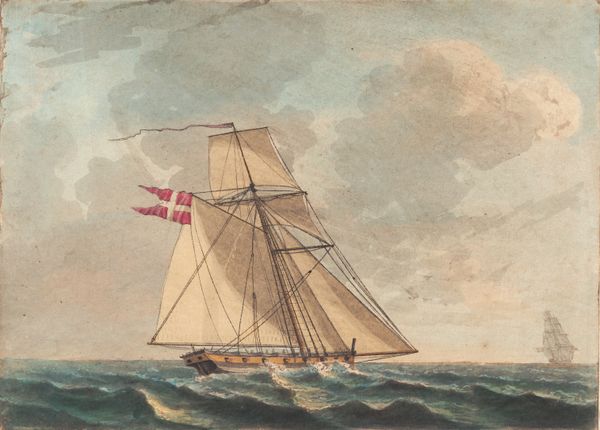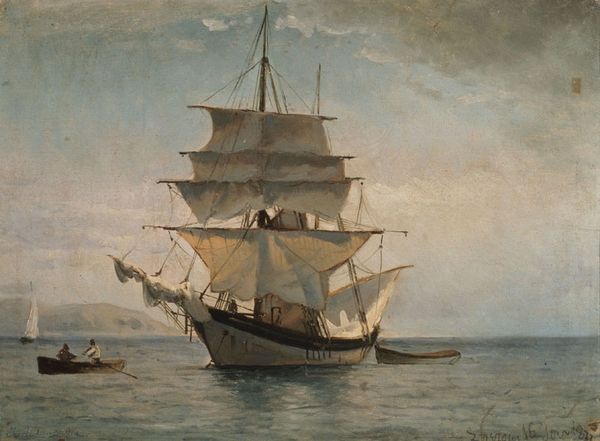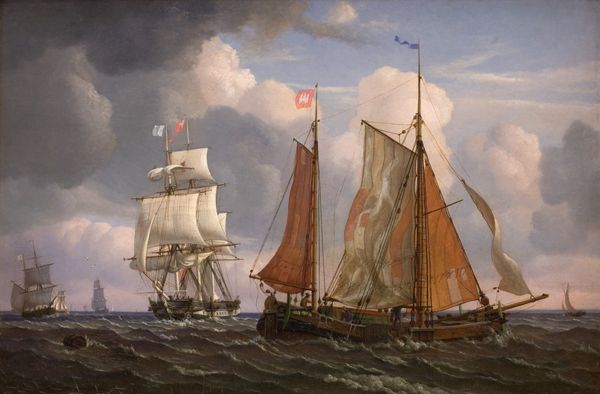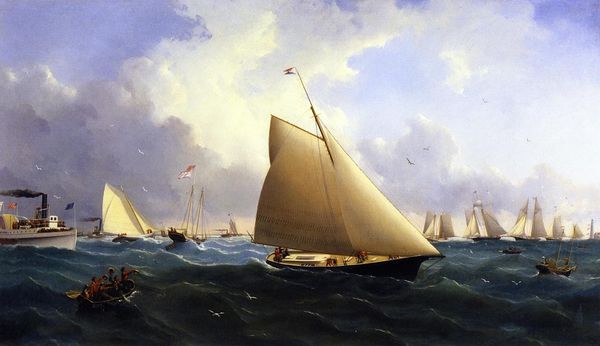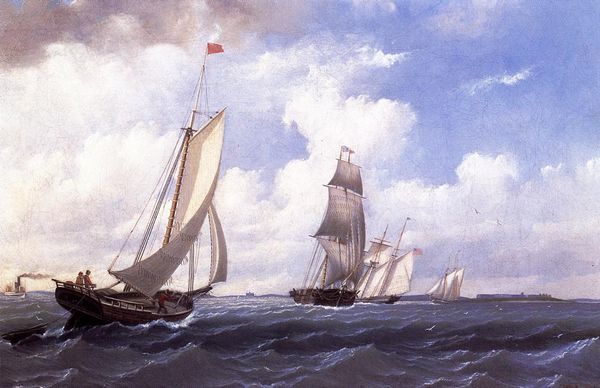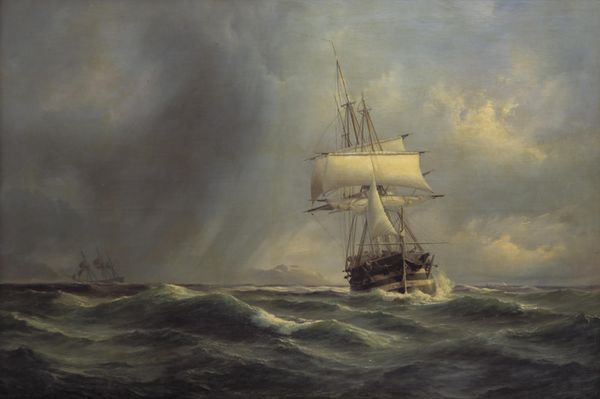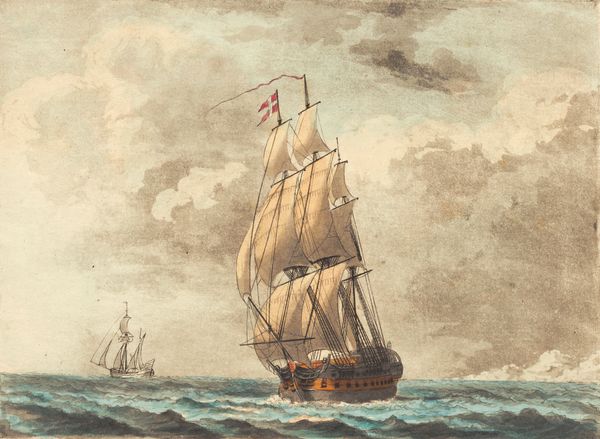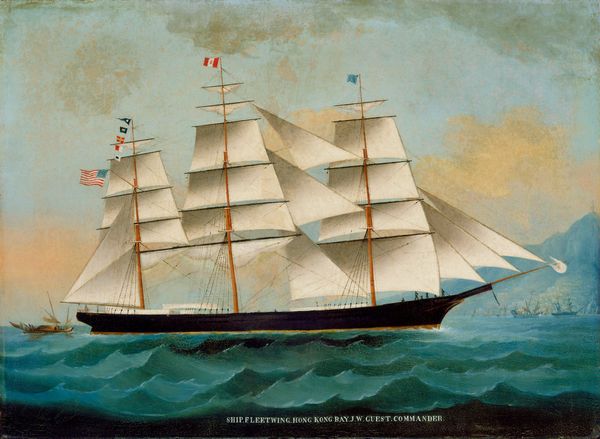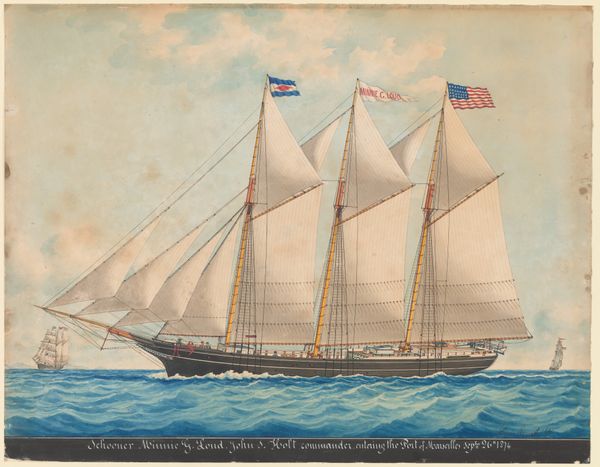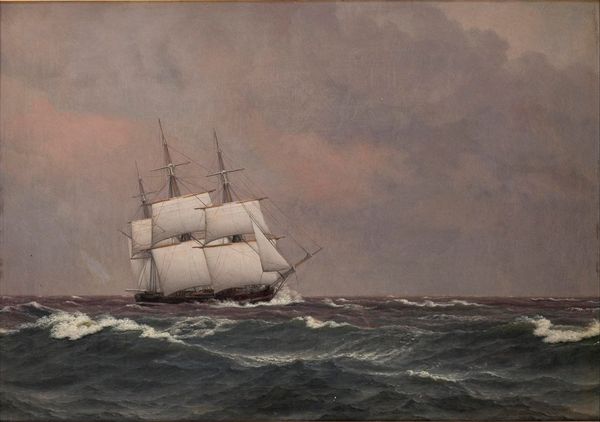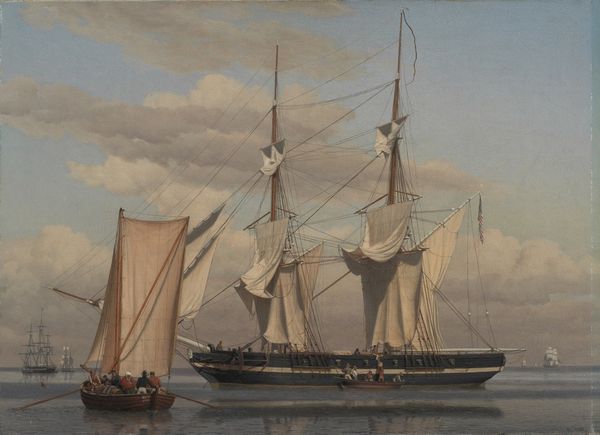
painting, oil-paint
#
painting
#
oil-paint
#
landscape
#
oil painting
#
history-painting
#
realism
Dimensions: overall: 59 x 91.2 cm (23 1/4 x 35 7/8 in.) framed: 69.9 x 101.6 x 7 cm (27 1/2 x 40 x 2 3/4 in.)
Copyright: National Gallery of Art: CC0 1.0
Curator: So, what do you think about this Fritz Müller oil painting entitled, "Capture of the "Savannah" by the "U.S.S. Perry"", created in 1861? Editor: My first impression is just how still everything feels despite being a naval scene. The light seems almost… dreamy, like a memory rather than a battle. Curator: It certainly captures a very specific moment in time during the American Civil War. Symbolically, we see the "U.S.S. Perry", flying the American flag, overtaking the "Savannah," distinguished by the Confederate flag. This juxtaposition really highlights the conflict and power dynamics. Editor: Right. The flags become almost character-like, silently screaming volumes about the conflict itself. It’s interesting, the way the artist handles the water; it’s almost ornamental, like patterned fabric. It reduces the violence of capture. Curator: Absolutely! Water, in iconography, often represents chaos and the unconscious. Perhaps Müller is hinting at the turbulent emotions and underlying currents of the time? And then you have these two ships. Editor: Which, really, are starkly contrasted. The “Savannah” has this lean, almost pirate-ship energy, and it is being apprehended by a much larger warship that to me stands for established power, ready to exert itself with almost suffocating force. Curator: The detail in the ships is compelling—you can almost feel the weight of the historical moment embedded in those hulls and sails. Even now. Editor: I keep getting pulled in by how the almost pastel quality of the sky juxtaposes the tense situation being depicted. Like history seen through rose-colored glasses, or maybe just the mists of time. Curator: I think what strikes me most is how the image makes you ponder how such a powerful scene is reduced to an almost calming, domestic portrayal, which goes against the emotions from war, and makes us wonder, what it's really being represented here? Editor: That’s such a great point. Maybe it’s that reduction, that domestication, that invites a different kind of reckoning. Curator: It becomes an image that subtly speaks volumes about the wider conflict through careful arrangement. Editor: So well said. It lingers with you, that quiet tension.
Comments
No comments
Be the first to comment and join the conversation on the ultimate creative platform.
